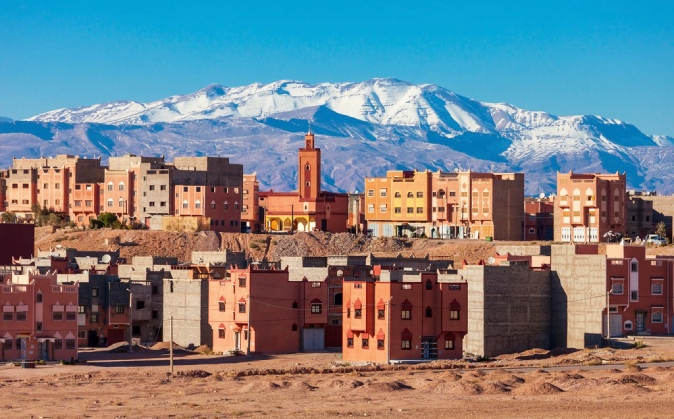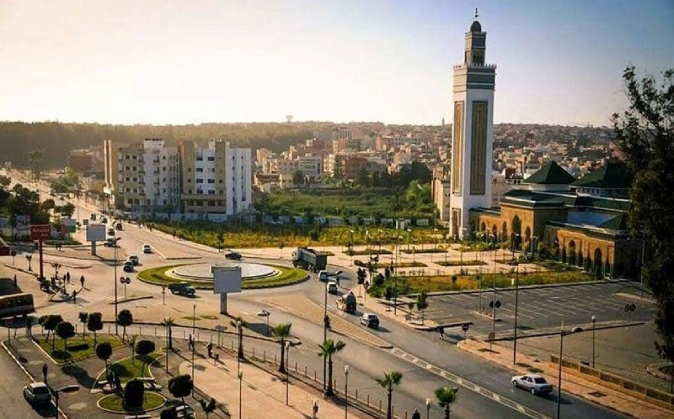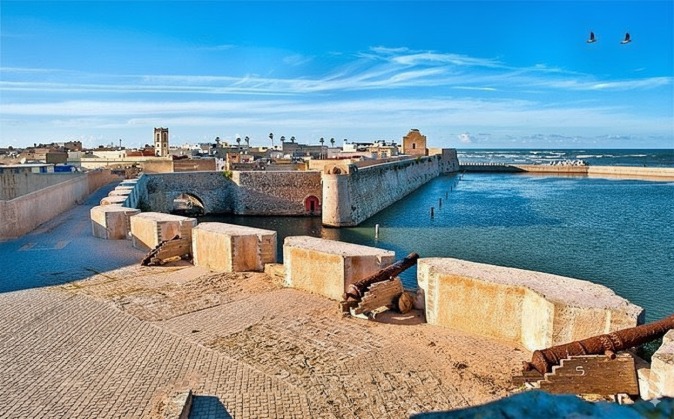Taza: Between Mountains and History in Northern Morocco
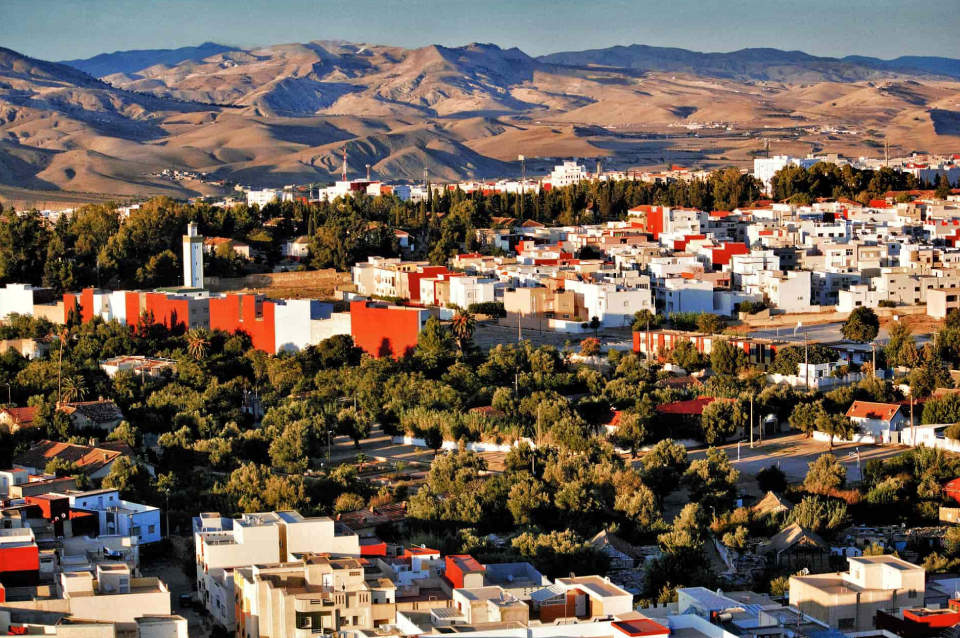
between the Rif and Middle Atlas mountain ranges, Taza stands as one of Morocco’s most historically significant yet often overlooked destinations. This ancient city, perched at an elevation of 580 meters, has served as a strategic gateway between eastern and western Morocco for centuries. For travelers seeking an authentic Moroccan experience away from the bustling tourist circuits, Taza offers a compelling blend of natural wonders, architectural treasures, and living traditions that have remained largely unchanged for generations.
Historical Significance
Taza’s strategic location made it a coveted prize throughout Moroccan history. Founded in the 8th century, the city became a crucial military and commercial hub, controlling the narrow passage known as the “Taza Gap” – the only practical route between the Mediterranean coast and the Sahara through Morocco’s mountainous terrain.
The city witnessed the rise and fall of dynasties, from the Almoravids to the Almohads, each leaving their architectural mark on the cityscape. The Almohad Sultan Abd al-Mu’min used Taza as his base before conquering Fez and Marrakech in the 12th century. Later, it became a stronghold for various rulers attempting to control Morocco, making it a living museum of medieval North African urban planning and fortification.
The Medina: A Journey Through Time
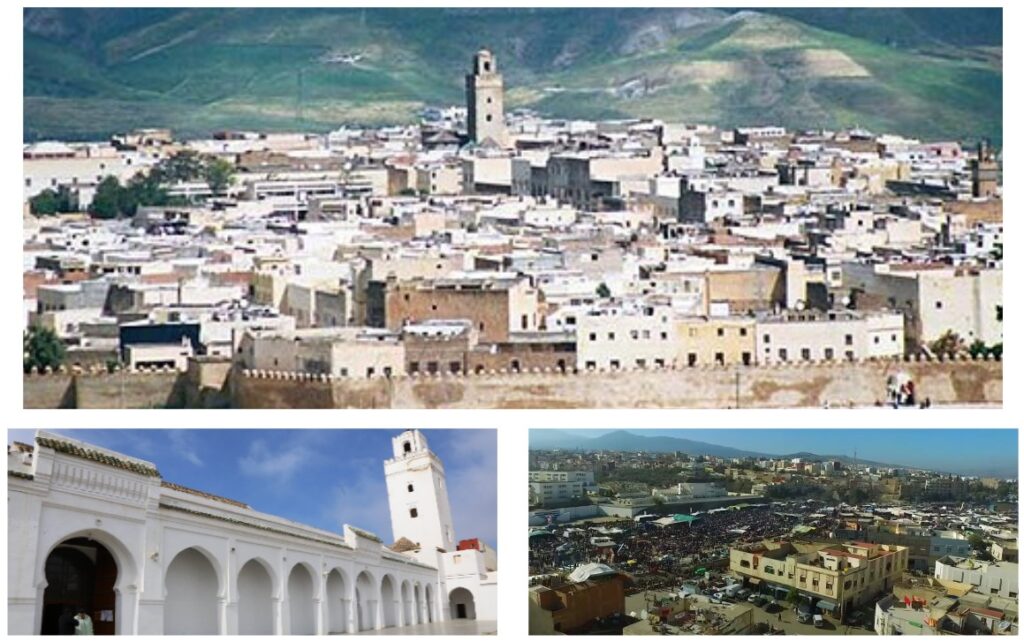
Old Town Architecture
Taza’s medina is divided into two distinct sections: the old medina (Taza Haut) perched on the hilltop, and the newer ville nouvelle (Taza Bas) established during the French Protectorate period in the valley below.
The old medina, enclosed by well-preserved ramparts dating back to the 12th century, invites visitors to wander through narrow, winding streets where time seems to have stood still. The fortification walls, stretching approximately 3 kilometers, feature impressive gates including Bab er-Rih (Gate of the Wind) and Bab Jamaa, which once protected the city from invaders.
The Grand Mosque
The Grand Mosque of Taza, built in 1135, ranks among Morocco’s oldest and most beautiful religious structures. While non-Muslims cannot enter, the exterior showcases exquisite Almohad architecture with its distinctive minaret and ornate bronze chandelier visible through the doorway – one of the finest examples of medieval Moroccan metalwork. The mosque’s courtyard and prayer hall have witnessed nearly nine centuries of continuous worship.
Souks and Traditional Crafts
The medina’s souks pulse with daily life, offering an authentic shopping experience far removed from tourist-oriented markets. Here, local artisans continue centuries-old traditions:
- Pottery and ceramics featuring distinctive geometric patterns
- Leather goods crafted using traditional tanning methods
- Woven textiles including colorful blankets and carpets
- Metalwork showcasing intricate filigree techniques
- Spices and herbs sourced from surrounding agricultural regions
Natural Wonders
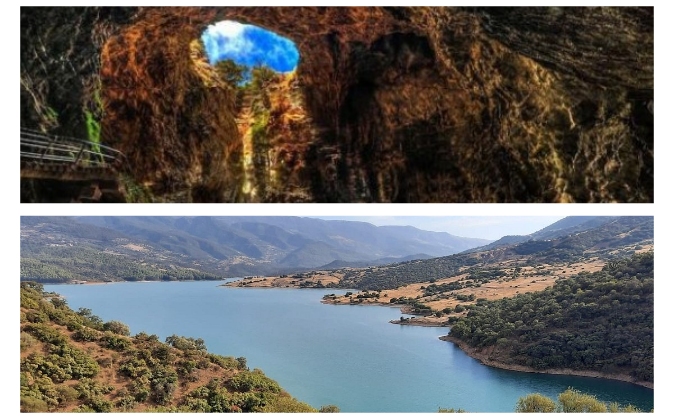
Friouato Caves (Grottes de Friouato)
Located approximately 30 kilometers southwest of Taza, the Friouato Caves represent one of North Africa’s most spectacular underground systems. Descending more than 180 meters through a series of 520 steps, visitors enter a subterranean world of stunning stalactites, stalagmites, and vast chambers.
The main chamber, known as the “Salle de Lixus,” spans an impressive area and features remarkable limestone formations created over millions of years. The cave system extends for several kilometers, though only a portion is accessible to tourists. The constant temperature of 13-15°C provides a refreshing escape during hot summer months.
Practical Information:
- Guided tours are mandatory and available daily
- Wear sturdy, non-slip footwear
- Bring a light jacket as temperatures drop significantly underground
- Photography is permitted
- Allow 2-3 hours for the complete visit
Tazekka National Park
Established in 1950, Tazekka National Park encompasses 137 square kilometers of diverse ecosystems, from cedar forests to rugged mountain peaks. The park’s centerpiece, Jbel Tazzeka, rises to 1,980 meters and offers panoramic views of the surrounding landscape.
Activities in the park:
- Hiking trails ranging from easy walks to challenging mountain treks
- Wildlife observation including Barbary macaques, wild boar, and diverse bird species
- Cascades de Ras el-Oued – picturesque waterfalls accessible via a short hike
- Cedar forests home to ancient trees and perfect for picnicking
The park’s biodiversity makes it a paradise for nature enthusiasts and photographers, especially during spring when wildflowers carpet the meadows.
Cultural Experiences
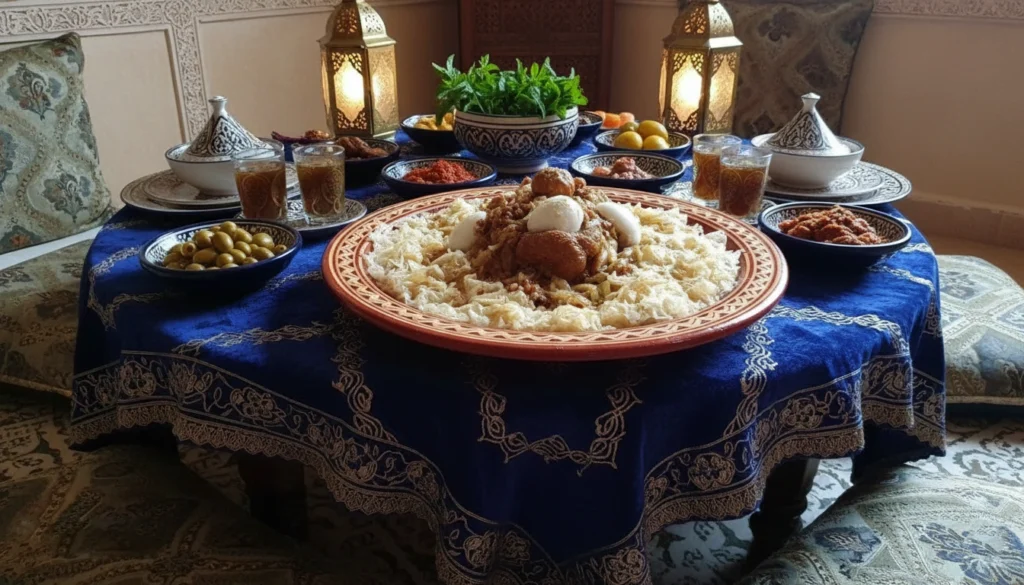
Traditional Cuisine
Taza’s culinary scene reflects its position at the crossroads of diverse Moroccan influences:
- Trid – Layered bread with chicken and vegetables, a regional specialty
- Mechoui – Slow-roasted lamb, particularly popular during celebrations
- Bessara – Hearty fava bean soup, a breakfast staple
- Fresh cherries and almonds from surrounding orchards
- Mint tea and pastries in traditional cafés overlooking the medina
Local restaurants in the medina offer authentic home-cooked meals, often prepared using recipes passed down through generations.
Local Festivals
Taza hosts several traditional festivals that provide insight into regional culture:
- Cherry Festival (June) – Celebrating the region’s cherry harvest with music, dance, and local products
- Religious moussems – Traditional gatherings honoring local saints with processions and ceremonies
- Traditional music performances featuring Amazigh (Berber) and Andalusian influences
Practical Travel Tips
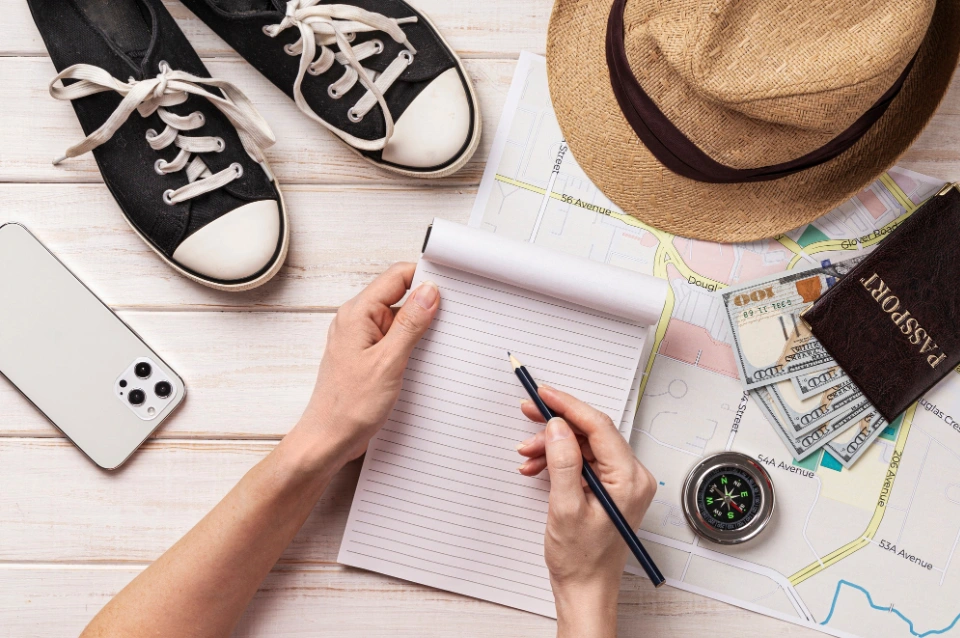
Getting There
By Train: Taza’s railway station connects to major Moroccan cities including Fez (2 hours), Oujda (3 hours), and Casablanca (5 hours). The train offers comfortable and affordable travel options.
By Bus: CTM and other bus companies operate regular services to Taza from throughout Morocco. Buses arrive at the ville nouvelle station.
By Car: Taza lies along the N6 highway, approximately 120 kilometers east of Fez. Driving offers flexibility for exploring surrounding attractions.
Best Time to Visit
- Spring (March-May): Ideal weather with blooming wildflowers and pleasant temperatures (15-25°C)
- Fall (September-November): Comfortable conditions for hiking and sightseeing
- Summer (June-August): Hot days but cool evenings; perfect for cave exploration
- Winter (December-February): Cold with possible snow in mountains; fewer tourists but some attractions may have limited access
Accommodation Options
Taza offers accommodation ranging from budget-friendly to mid-range:
- Guesthouses (Riads) in the medina provide authentic experiences
- Hotels in the ville nouvelle offer modern amenities
- Camping is available in Tazekka National Park
- Budget: $15-30 per night
- Mid-range: $30-60 per night
Language and Communication
While Arabic and Tamazight (Berber) are primary languages, French is widely spoken, especially in tourist areas. English speakers are less common, so basic French phrases or a translation app can be helpful.
Money Matters
- Currency: Moroccan Dirham (MAD)
- ATMs are available in the ville nouvelle
- Cash is preferred in the medina and for small purchases
- Credit cards accepted at larger hotels and some restaurants
Safety and Etiquette
Taza is generally safe for tourists, with friendly locals accustomed to welcoming visitors. However, standard precautions apply:
- Dress modestly, especially in the medina (shoulders and knees covered)
- Ask permission before photographing people
- Negotiate prices in souks politely but firmly
- Be respectful during prayer times
- Avoid walking alone in isolated areas after dark
- Keep valuables secure in crowded markets
Day Trip Itinerary
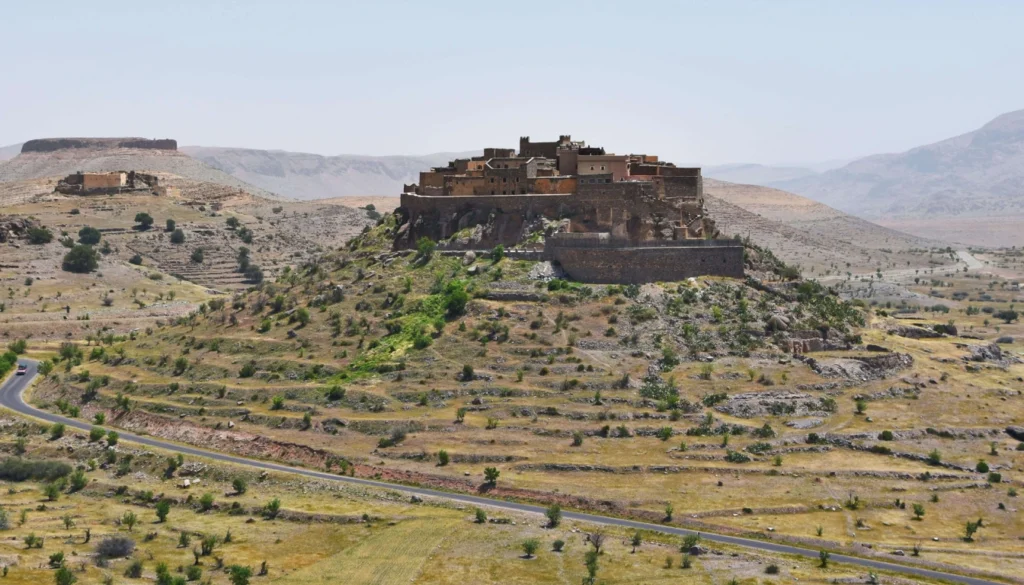
Day 1: Historical Taza
- Morning: Explore the old medina and ramparts
- Midday: Visit the Grand Mosque exterior and surrounding area
- Afternoon: Browse souks and purchase local crafts
- Evening: Sunset views from the medina walls with mint tea
Day 2: Natural Wonders
- Morning: Early departure to Friouato Caves
- Afternoon: Picnic and hiking in Tazekka National Park
- Evening: Return to Taza for traditional dinner
Day 3: Cultural Immersion
- Morning: Visit local olive oil or pottery workshops
- Afternoon: Hammam experience in traditional bathhouse
- Evening: Traditional music café in the medina
Nearby Attractions
Fez (120 km west)
Morocco’s spiritual and cultural capital, easily visited as a day trip or overnight excursion.
Oujda (160 km east)
Border city with unique eastern Moroccan character and Mediterranean influences.
Sefrou (90 km west)
Charming town known for its cherry festival and Jewish heritage.
Sustainable Tourism Recommendations
As a destination off the beaten path, Taza benefits from responsible tourism practices:
- Support local businesses by purchasing directly from artisans
- Hire local guides for cave and park explorations
- Respect natural sites by not littering and staying on marked trails
- Engage respectfully with local communities and traditions
- Choose eco-friendly accommodations when available
- Minimize plastic use by carrying a reusable water bottle
Why Visit Taza?
In an era when Morocco’s imperial cities burst with tourists, Taza offers something increasingly rare: authenticity. Here, daily life continues as it has for centuries, relatively untouched by mass tourism. The call to prayer echoes through ancient streets, craftsmen practice traditional trades, and families gather in cafés that have served generations.
For travelers willing to venture beyond conventional itineraries, Taza rewards with genuine cultural encounters, spectacular natural beauty, and the satisfaction of discovering a place where tourism enhances rather than overwhelms local life. It’s a destination for the curious, the adventurous, and those seeking to understand Morocco beyond the postcard images.
Essential Travel Checklist
- Valid passport (6 months validity recommended)
- Comfortable walking shoes for medina exploration
- Hiking boots for mountain trails
- Light layers for cave visits
- Modest clothing respecting local customs
- Sunscreen and hat for outdoor activities
- Camera with extra batteries
- Basic first aid kit
- Flashlight for caves (often provided by guides)
- Reusable water bottle
- French phrasebook or translation app
Taza stands as a testament to Morocco’s layered history and natural diversity. While it may lack the fame of Marrakech or the grandeur of Fez, it offers something equally valuable: an unfiltered glimpse into authentic Moroccan life where ancient traditions thrive alongside stunning natural landscapes.
Whether you’re descending into the depths of Friouato Caves, walking the medieval ramparts at sunset, or sharing mint tea with locals in a centuries-old café, Taza provides experiences that linger long after your journey ends. For travelers seeking to move beyond tourist circuits and discover Morocco’s hidden treasures, this mountain gateway delivers richly on its promise of adventure, history, and genuine cultural connection.
FAQs
Q1: Is Taza safe for solo travelers? Yes, Taza is generally safe for solo travelers, including women. The local community is welcoming and accustomed to visitors. However, exercise standard precautions such as avoiding isolated areas after dark, dressing modestly, and staying aware of your surroundings. Solo female travelers should consider staying in recommended accommodations and joining group tours for cave and park visits.
Q2: How many days should I spend in Taza? A minimum of 2-3 days allows you to explore the medina, visit Friouato Caves, and experience Tazekka National Park. History enthusiasts and nature lovers may want to extend their stay to 4-5 days to fully appreciate the region’s offerings and enjoy a more relaxed pace.
Q3: Can I visit the Friouato Caves independently or do I need a guide? A licensed guide is mandatory for cave visits for safety reasons. Guides are available at the site entrance and are included in the admission fee. They provide valuable information about the cave’s formation and ensure visitors navigate the steep descent safely. The investment is worthwhile for both safety and educational value.
Q4: What’s the best way to get from Taza Bas (ville nouvelle) to Taza Haut (old medina)? Petit taxis (small blue taxis) run regularly between the ville nouvelle and the old medina, taking about 10 minutes and costing approximately 10-15 MAD. You can also take a local bus for a more economical option (around 5 MAD), though services may be less frequent. The distance is walkable for fit travelers (about 3 kilometers uphill) but can be challenging in hot weather.
Q5: Are there ATMs and internet access in Taza? ATMs are available primarily in Taza Bas (ville nouvelle), with several banks along the main boulevard. The old medina has limited ATM access, so withdraw cash before heading up. Internet cafés exist in the ville nouvelle, and most hotels offer WiFi, though connection speeds may be slower than in larger Moroccan cities. Mobile data coverage is generally reliable with major Moroccan providers.

